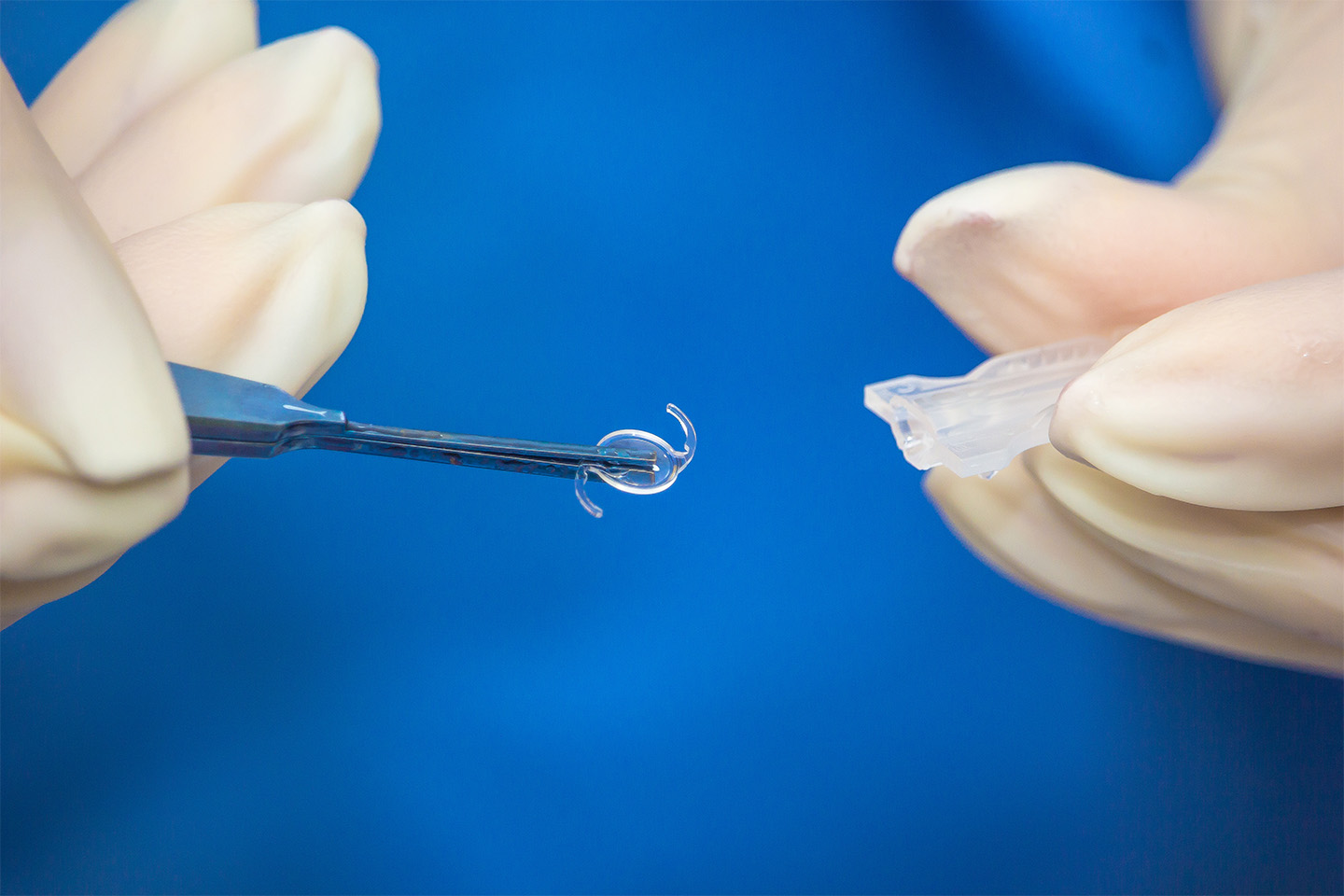Corneal Cross-Linking, an Innovative Treatment for Keratoconus

At Kleiman Evangelista Eye Centers of Texas, we aim to provide comprehensive treatments for vision problems in all forms, including keratoconus. With technological advances in eye care, we can treat this condition using corneal cross-linking. Learn more about this procedure for keratoconus treatment in Dallas.
What is Keratoconus?
Keratoconus results when the cornea becomes thinner and weaker over time. The cornea then bulges into a cone shape, which distorts the vision and makes it hard to see. This condition is typically hereditary but can also be caused by excessive eye rubbing. As the condition progresses, it can lead to vision loss. Severe cases can even call for a corneal transplant.
What is Corneal Cross-Linking?
Corneal cross-linking is a minimally invasive, outpatient procedure used to treat progressive keratoconus and other forms of corneal ectasia that can occur after corrective eye surgery. This treatment strengthens bonds between the collagen fibers of the cornea to slow the progression of keratoconus. While it does not reverse vision loss, it can stop the condition from getting worse.
There are two forms of the corneal cross-linking procedure:
- Epi-off cross-linking — This surgery involves removing the epithelium, the outermost layer of the cornea, to ensure eye drops are absorbed. This procedure is FDA approved and is covered by some insurances.
- Epi-on cross-linking — In this method, the epithelium remains intact, making it less invasive but more difficult for the drops to reach the cornea.
Currently, the Epi-Off Cross-Linking method using Photrexa viscous, Photrexa, and the KXL system is the only FDA-approved method available in the United States.
Benefits of Keratoconus Treatment in Dallas
Corneal cross-linking offers those with keratoconus an opportunity to preserve their vision. In some situations, the eyesight may even get better over time. If conducted early enough, it can also prevent the need for a corneal transplant.
What Happens During Corneal Cross-Linking Surgery?
We will complete the corneal cross-linking procedure at one of our facilities. The process begins with a routine eye exam to measure your vision and general eye health.
Here’s what to expect on surgery day:
- Our eye care experts in Dallas will give you numbing eye drops and calming medications.
- They will then remove the epithelium and administer the riboflavin (vitamin B) eye drops. One drop is placed onto the eye every 5 minutes for 30 minutes. It will take about 30 minutes for your cornea to absorb enough of this fluid.
- After rechecking your corneal thickness, the surgeon will administer controlled UV light for about 30 minutes while continuing to administer the drops every 5 minutes.
Recovery Process for Corneal Cross-Linking in Dallas
After your procedure, you will need someone to drive you home. Your surgeon will place a bandage contact lens in your eyes to aid with proper recovery and ease discomfort. The bandage contact lens will be removed by a doctor 3-5 days after surgery. If the epithelium has not completely healed at the time of removal, a new bandage lens will be placed and removed 2-3 days after replacement. They will also prescribe antibiotic and anti-inflammatory eye drops.
Most patients will experience only a few days of discomfort. While vision will improve within 3 to 4 days following your procedure, you may still experience fluctuations and light sensitivity throughout the 1- to 3-month healing period. Since corneal cross-linking is not meant to improve vision, the best possible vision that a patient with keratoconus can have will be with rigid gas-permeable or scleral contact lenses. Patients must wait at least 4 weeks after the procedure before being fit in these lenses.
Am I Candidate for Corneal Cross-Linking?
Your eye care expert in Dallas will measure your corneal thickness to confirm that you are a candidate for this treatment. Corneal cross-linking can only be performed if the thinnest portion of the cornea is approximately 400 μm and in the absence of significant corneal scarring. Corneal cross-linking is best when the cornea hasn’t become too irregular, or there isn’t too much vision loss.
The FDA has approved this procedure for patients 14 and older with progressive keratoconus. For those over 40, this condition is typically no longer progressing. However, if there are signs of progression, you may be considered a candidate.
At Kleiman Evangelista Eye Centers, we aim to stay on the cutting edge of surgical solutions to help you maintain your best vision. Schedule a consultation with the experts in cataract and LASIK surgery in Dallas to determine if this treatment is right for you.









